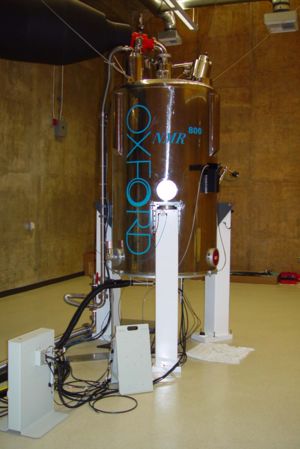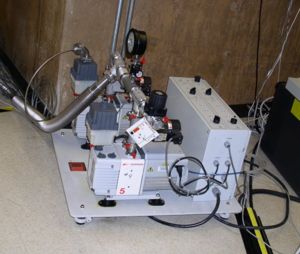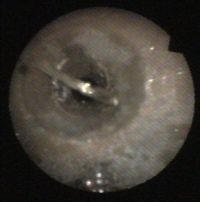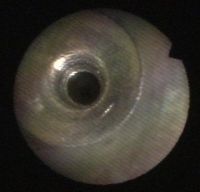Oxford Instruments 2.2K 800/63 magnet
From NMR Wiki
Contents |
Facilities housing such instruments
Are you managing a similar instrument? - post a link here, share your experiences on this page!
There must be about 40(?) of them:
- University of Colorado
- University of California, Irvine
- University of Copenhagen
- University of Minnesota
- McGill University
- National High Field NMR Centre NANUC, University of Alberta
- University of Texas Southwestern Medical Center
- Stanford Magnetic Resonance Lab
- University of Helsinki, Institute of Biotechnology
The Oxford 2.2K 800/63
| Oxford 2.2K 800/63 | |

| |
| Manufacturer | Oxford Instruments, Inc. |
| Type | Pumped superconducting electromagnet |
| Coil temperature | 2.2 K |
| Field strength | 18 T |
| Bore direction | vertical |
| Bore diameter | 63 mm |
Oxford 2.2K 800/6.3 is a pumped superconducting magnet.
The NANUC 2.2K 800MHz 63mm magnet The National High Field NMR Centre (NANUC)
The NANUC 2.2K 800MHz NMR magnet system comprises a fully persistent 18.794 Tesla superconducting magnet in a low loss cryostat with a 63 mm room temperature bore. The magnet is wound with fully stabilized Niobium Titanium and enhanced Niobium Tin superconductor, and is fitted with a superconducting switch so that it operates in true persistent mode. A set of superconducting shim coils are included in order to cancel first and second order field gradients generated by winding inhomogeneities and tolerancing.
Operation is at 2.2K. This temperature is achieved by expanding liquid helium into an evaporation chamber via a needle valve. The liquid helium required for this purpose is contained in an upper helium vessel at 4.2K, whilst the magnet is held in a lower helium vessel at 2.2K. The use of this technique maintains the gas pressure above the helium bath at one atmosphere and enables helium refill operations to be carried out in accordance with standard 4.2K system procedures. Two evacuation pumps are provided. These are used to maintain the system in its final steady operating state.
Flow of He into the refrigeration loop is controlled by two needle valves. Only one valve operates at a time, the second one is normally closed and used as a backup. Both valves are controlled by the knob at the end of about 1 meter long shaft.
The helium vessels (Total 1350L He) are shielded from room temperature by a vapour-cooled shield and a liquid nitrogen vessel (Total 180L) . The helium and nitrogen vessels are suspended concentrically within an evacuated stainless steel container, which provides room temperature bore access to the centre of the magnetic field.
Shown above is Edwards dual RV5 pumping system that is continuously pumping He from the refigeration loop.
Needle valves
If a needle valve is blocked, it will be impossible to regulate He flow and therefore - the desired cryostat temperature may not be achievable. Second valve may be opened in such case.
Images below are contributed by John Davidson (Praxair magnet services). Image on the left shows endoscopic images of blocked needle valve, on the right is normal view. A metal shaving became trapped in the inlet of needle valve at installation. Because of that the magned could not cool to operating temperature.
Procedures and Practices
NANUC Nitrogen Filling Procedure
UC Irvine N2 filling procedure (Oxford 800 MHz)
pump swapping procedure (ammrl response) (please take a look at the system manual as well)
Related links
Operational principles of pumped magnets
Discussion corner
If you are managing one of these magnets then this discussion thread is for you. Please post questions and comments.





